Day three on Niue island rolled around, and it was raining. In fact, it was raining so hard that I was starting to get worried. Was it going to flood? Would I need to start gathering two of every animal? I could no longer even see the church across Avatele’s malē (village green). I was in a whole new world, a world that consisted only of the Red House and endless blinding rain.
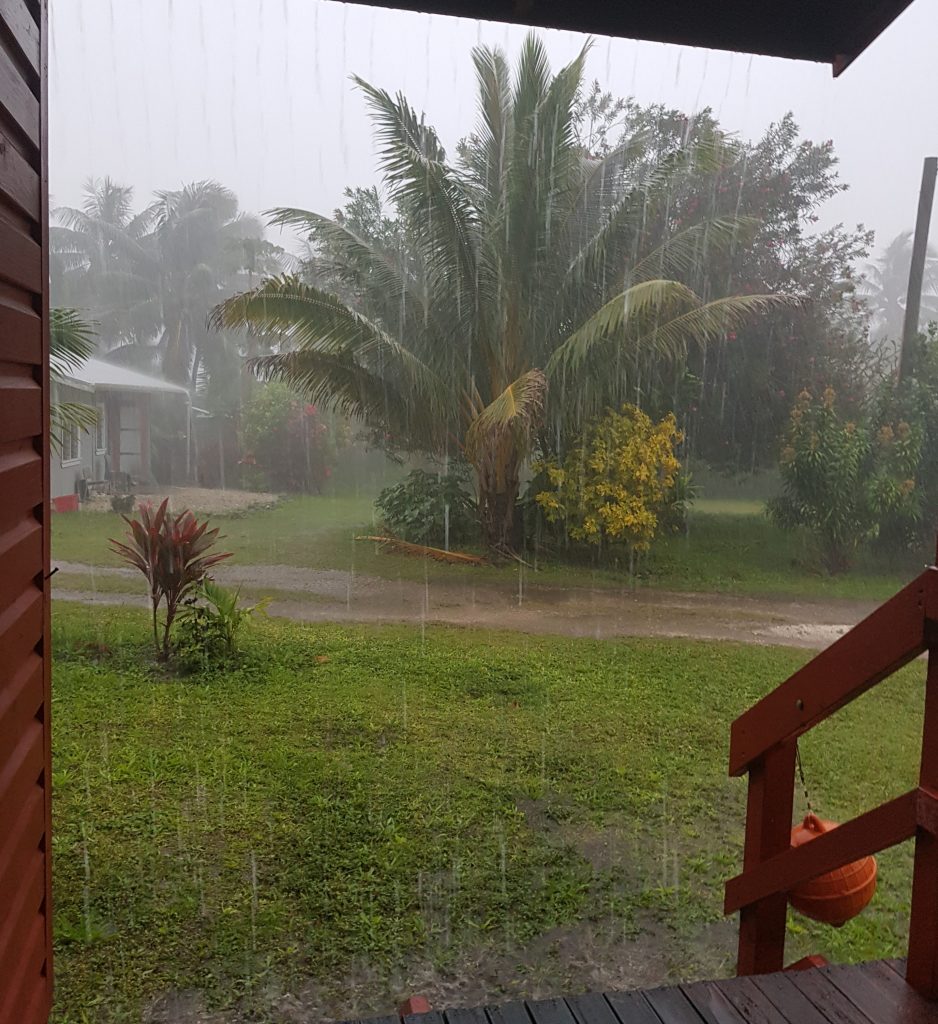
I had planned on popping into a women’s craft group in Alofi that morning, as suggested by the information board in the Tourist Centre (once open). I could only hope the rain would ease by the time I needed to get on the road, else I wasn’t sure the drive would be safe.
After a couple hours of anxious waiting, the rain did ease a little, so I cautiously set off. I arrived for the 9am start of the Makini Women’s Group. I’d read online you should always bring some food to share so I awkwardly proffered a pack of Tim Tams and hazarded: “I heard you can learn weaving here?”
I was directed to Eva, a kindly septuagenarian whose laugh would soon become a sure signal that I’d made a mistake somewhere. She sat me down, leaned in, and said: “I will teach you – but first, we talk. Why do you want to learn?”
I suddenly felt like an acolyte petitioning a master. Luckily I had a good answer lined up, and mentioned that my Mum is a craftswoman and that I’d like to make something to bring home to her. This seemed to satisfy my teacher.
Eva was slightly bemused by the Tim Tams. She does appreciate a donation, but in the form of cash, not biscuits. Internet, I trusted you!
And so my education began. The basic weaving technique is split into four simple steps, which combine to create circular pattern from which everything from mats to baskets can be created. Structure is provided by the stiff central ribs of the coconut palm leaf, while strips of pandanus provide the bulk. I was great at step one and step two, but step three? That was a doozy. I couldn’t get it no matter how many times I tried, but at least this appeared to amuse my sensei.
I seem to learn a little different from most people. Everyone else seems to make progress slowly but steadily. I’m usually resoundingly hopeless at any new skill until all of a sudden it clicks and then I make a great leap forward. It was no different here. Suddenly Eva’s directions seemed to make sense and I had it!
I was confidently weaving along by the time we were joined by more wisdom-seeking palagi. They marvelled at my skill as they too stumbled on step three.
Making conversation, I showed Eva a picture of the uga (coconut crab, pronounced unga) I had proudly photographed the day before on an Alofi sea track. I figured it was a juvenile since it was wearing a shell like a hermit crab (uga appear to have a very complicated life cycle, not unlike eels). She laughed. Uh oh.

“That’s not an uga, that’s an ugamea!” She declared. Ugamea are apparently smaller relatives of the uga, and according to Eva are just as good for eating, even if they are out of fashion with nowadays.
So I was back to square one when it came to tracking down this famous crustacean, but Eva advised that a village show day occurring that Saturday at Tuapa, not far north of her home village of Makefu, might be just the place to find one. I duly jotted this down in my phone – the Niue Tourism website had advised me to try to time my visit with one of these celebrations, but provided no guidance as to when they ocurred. Once again dumb luck had saved the day.
I finished the day with aching thumbs, an invitation to join the crafting group at Makefu on Monday, and a pawpaw the size of my head. Yes, I had finally found the fresh produce, brought to this social occasion to trade and sell.
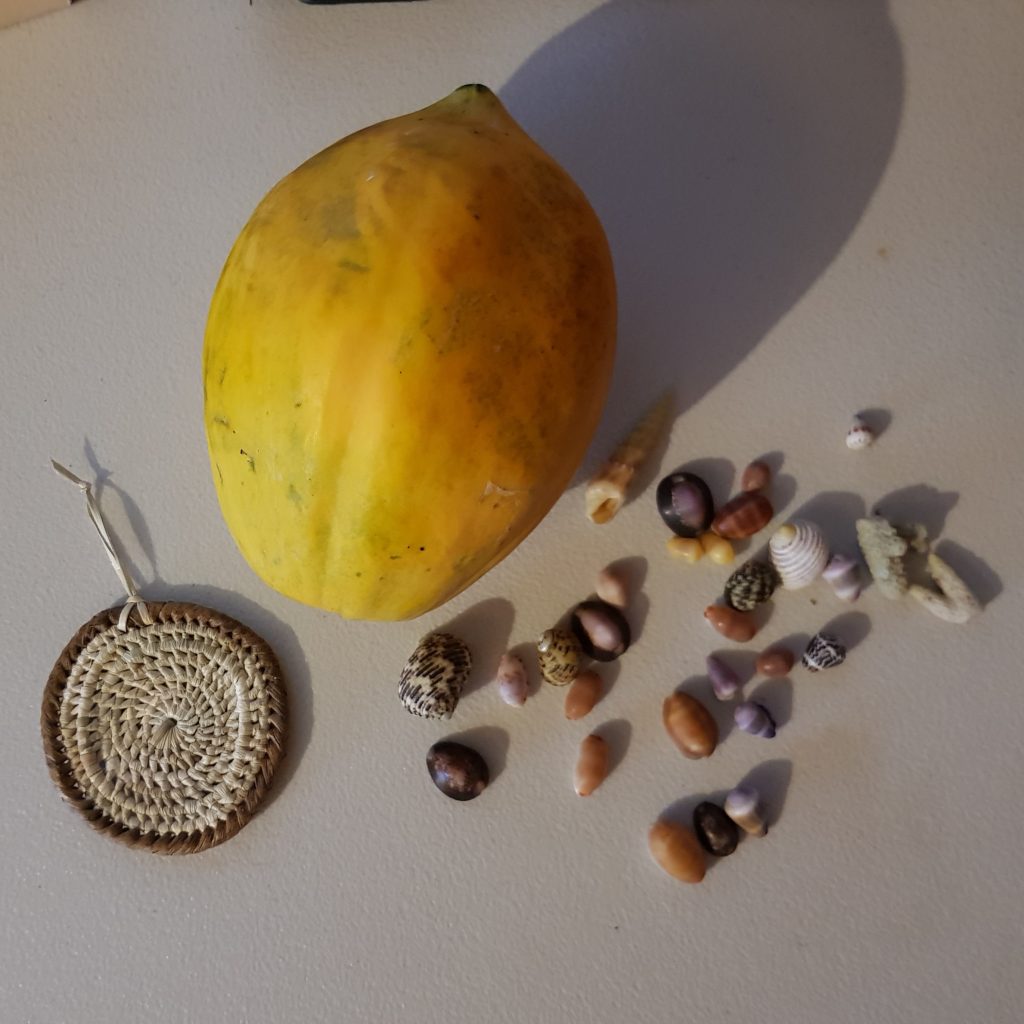
Speaking of produce, I wanted to check out the famous Alofi makete (market). Once again I was flummoxed by contradictory information – the sign on the open air hall in which it was conducted said the market ran 6am-12pm, whereas the tourist centre said it started at 4.30am and 8am was the absolute latest one should plan to arrive.
I decided to take a middle ground. The feral roosters had decided on 5.30am as my daily wake up call, so I duly roused myself and arrived at the market place not long after 6am. Things seemed very quiet, with only a small smattering of stalls, and I was unsure whether to consider myself early or late. I figured at least one of those could be fixed by taking a walk down to the beach and back, and returned only to find things even quieter and to be quite definitively told I had missed out. So I bought a consolation coconut bun for breakfast and set about some alternative exploration.
I didn’t slouch when the eagerly-awaited Saturday show day rolled around, making sure to arrive at the village by 8am, having been warned that all the best entertainment would take place before noon. Here I encountered the one and only traffic jam of my holiday, as everybody on the island appeared to have converged on the malē next door to Tuapa’s church.
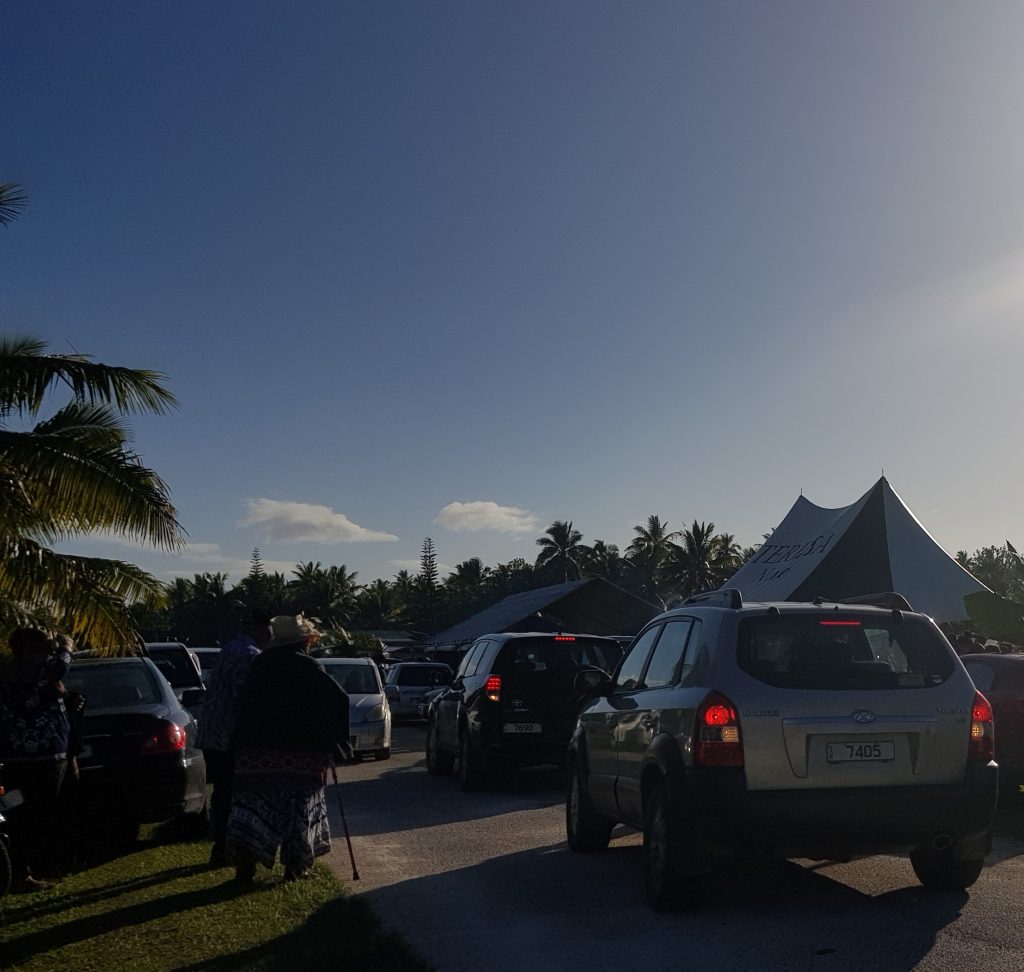
Despite being early, the heat was already intense. I’d formed a theory that Niueans get everything done so early in the morning in order to avoid the draining mid-day heat. I’d slowly been slipping into a similar pattern myself, waking up with the roosters and adventuring early in the morning before retiring back to my accommodation to focus on writing and research during the hottest hours of the day.
I also located more of Niue’s elusive fresh produce, taro and banana laid out in woven baskets under a long awning.
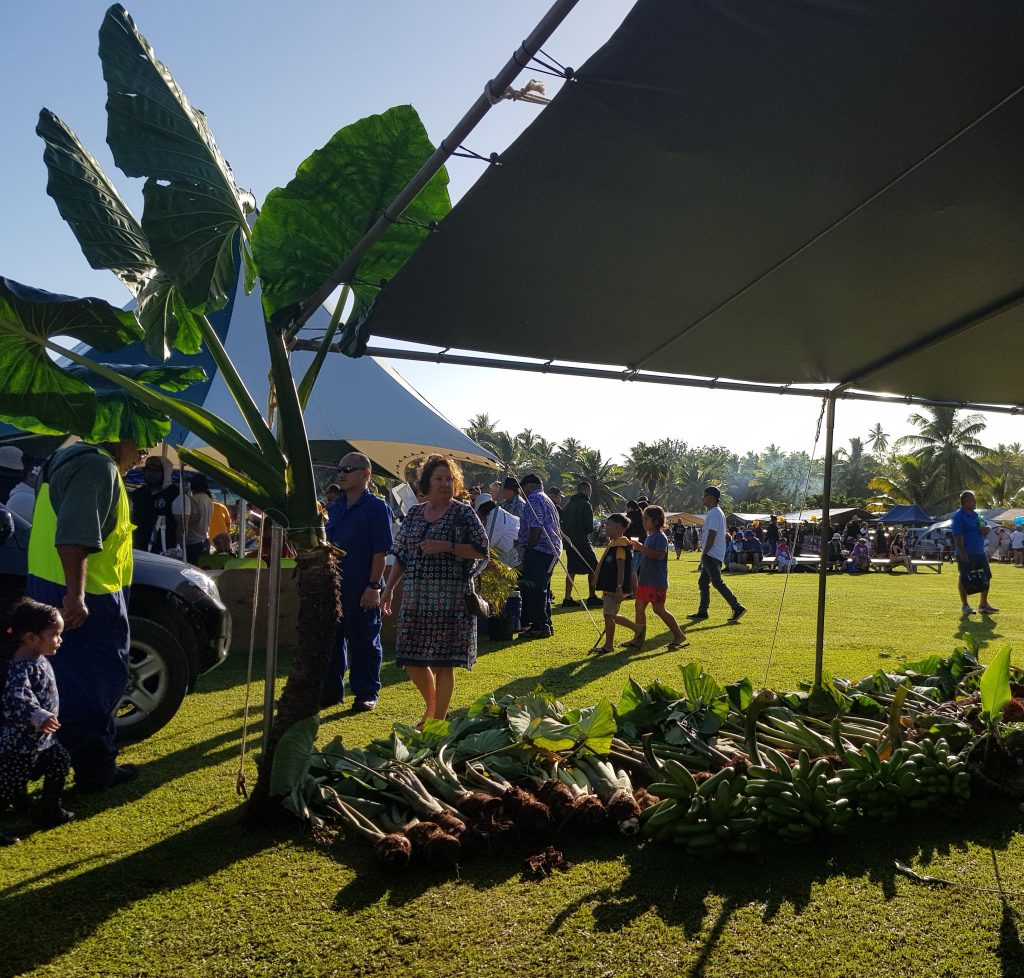
There was also a large selection of prepared food for sale at various stalls. I perused the Niuean-language menu at one and bravely ordered an item whose lengthy description contained only one word I vaguely understood: ika.
My next discovery was the elusive uga – several of them in fact! The humongous and fairly annoyed crustaceans were tethered up, awaiting purchase by discerning diners. Indeed, the hand-sized ugamea were mere tiddlers compared to these prehistoric beasts.
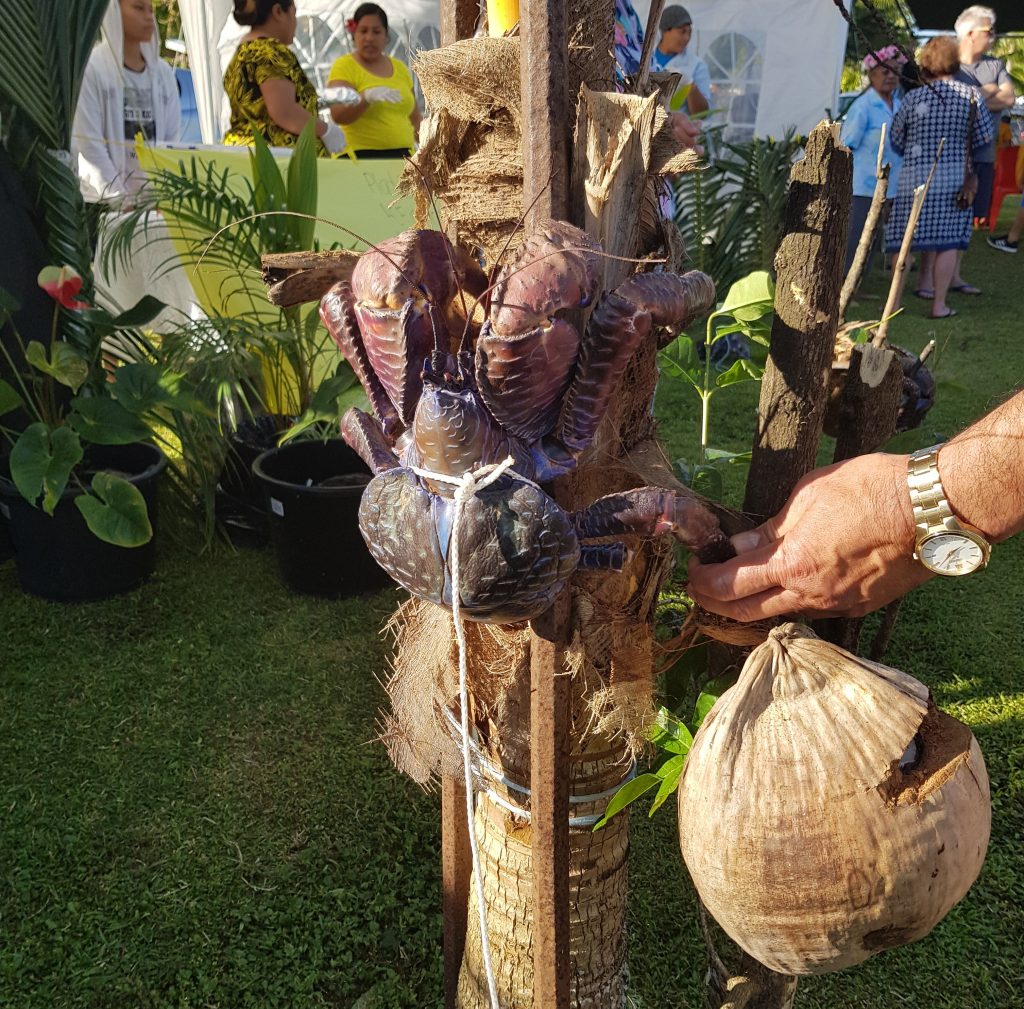
Then after some speeches the entertainment began. First up were the women of Tuapa, carrying their crafting creations on their shoulders as music played. I immediately took note of this as a suggestion for Mum’s future craft shows.
According to the locals I questioned, all of these blankets were examples of tīvaevae (pronounced see-vy-vy), a craft borrowed from Tonga, in turn adapted from European-style quilts. Niue has its own similar practise, called ie pili, but what differences there are between the two I have yet to learn.

Then came the dancing. I was a bit shocked the first time I saw somebody saunter up to the dancers and tuck a bank note into a participant’s waistband, but apparently this is a common way of donating to the schools and youth groups that the dancers represent. Fortunately for those of us not prepared to wander into a performance in progress, a convenient basket is also provided up front for the purpose.
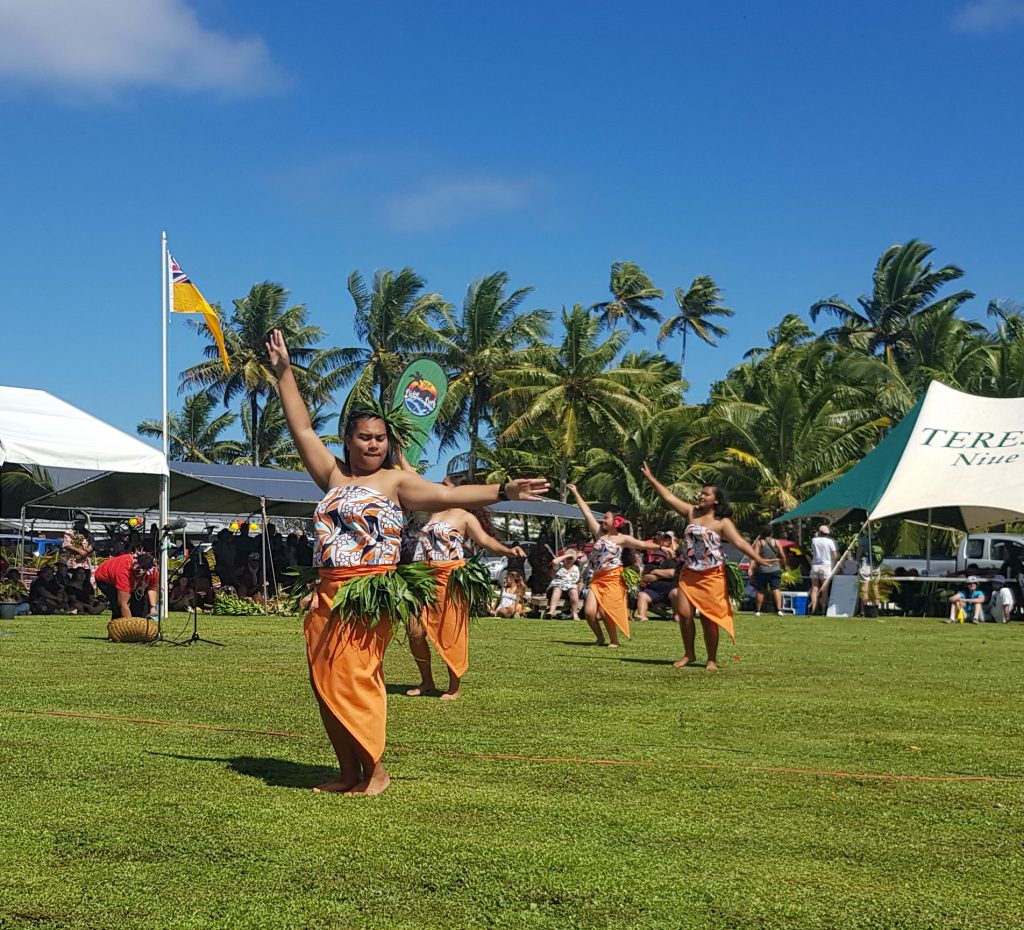
By noon the performance was over and the sport was to begin. By this time however the furnace-like heat of the day had me exhausted so it was back home to the Red House for a quiet afternoon.
Monday was another early start, for I had a date to keep in Makefu. I met up with Eva and her friend near the church – this was the entirety of our group for the day, although one other participant was away. Eva surprised me with the gift of a woven bowl, and I began work on a second coaster. This time I was advanced enough to learn the technique to make the outer edge!
We wove and chatted through the morning to the background of waves on the reef and roosters calling to each other. This used to be a big industry in Niue, with an annual production of 50,000 hats made for export reported in 1908. On hotter days the women would weave in caves on the coast where the moister atmosphere provided better conditions for manipulating the pandanus strips. Interestingly, Eva did tell me a story about a cave she used to go to, but I unfortunately didn’t quite catch the context.
And they confirmed my theory about the early mornings – both women informed me they generally wake at 3am.
As the scorching noon approached we made plans to part ways. But before I went, Eva had another tip for me. There was to be a craft show in Alofi North on Wednesday. She’d take my last coaster, finish it off, and see me there. I agreed and we parted ways for the afternoon.
When I finally found the hall in Alofi come Wednesday morning, the speeches were in full swing, and once again the only person I understood was the New Zealand High Commissioner. I hung around outside until the ceremonial stuff was over and then ventured inside. The walls were festooned by all sorts of brightly patterned works of art, while tables displayed weaving work. The only thing I couldn’t find was my friend.
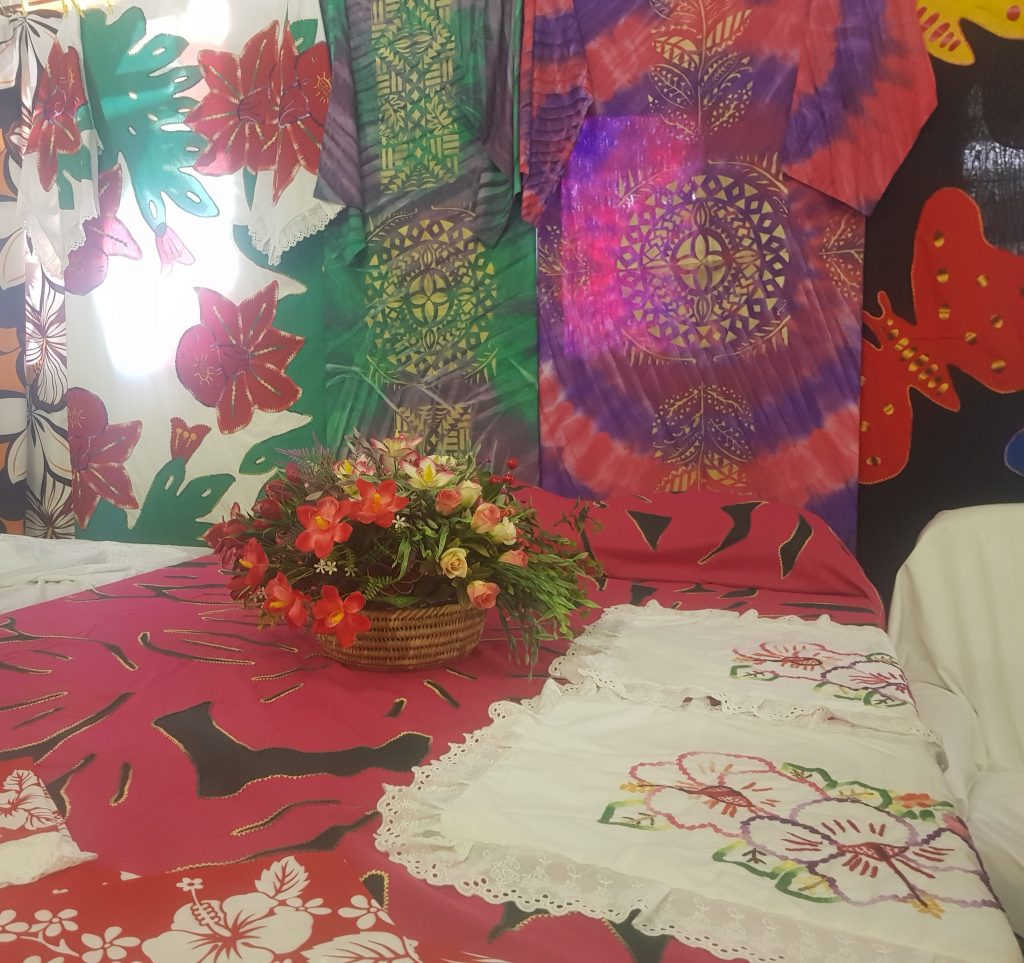
I was eventually forced to give up, sad to think I’d not see my friend again before leaving the island on Friday.
Though I feared a proper farewell was now out of the question, it did not turn out to be so. For who should meet me at the airport but Eva, bringing my final finished handicraft!
So we said our goodbyes before I entered the departure lounge, ready to leave behind this lone island in the middle of the Pacific and return to the cold shores of my home.
But I would carry with me a small spark of the warmth I’d found.
References:
NIUE 1774-1974, 200 years of contact and change by Margaret Pointer

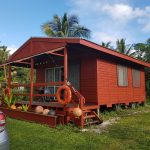

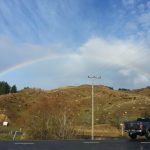
That coconut crab is hilarious. It actually grows pretty large.
That rainy day anyway, was the preparation for the beautiful tomorrow.
north shore gardening
Is this a tradition or an event following the celebration? The ambiance is perfect, and the people seem to be enjoying those. I prefer this ones than wild parties of this generation.
Kelsy
https://www.pestcontrolwestaucklandnz.kiwi/